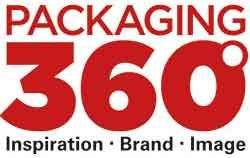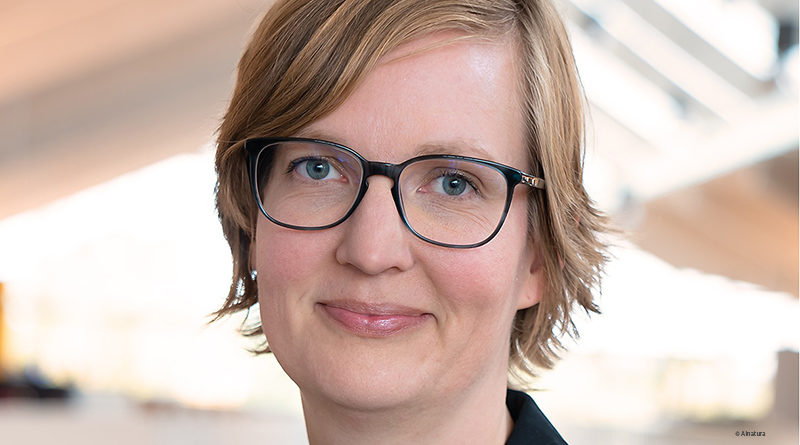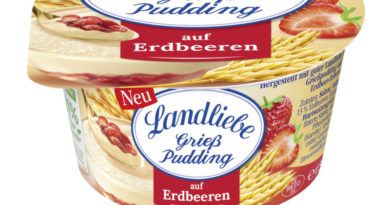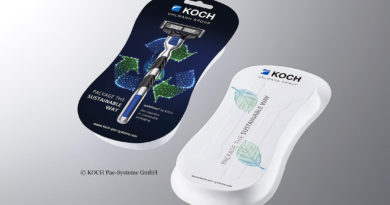“Reusable Must Grow”
Being open to alternative packaging materials, but taking a close look at their ecological balance sheet: This is what Isabell Kuhl, deputy head of department in quality management at Alnatura, advocates. The packaging specialist explains the hurdles to be overcome.
Alnatura has announced that it will examine the packaging of all listed products with regard to their sustainability. How do you solve this mammoth task?
We have over 1,300 products in our range, so naturally the assortment can only be optimized successively according to product groups. We have been examining the packaging of products from a sustainability perspective for a long time anyway. In principle, we take the same approach to existing products as we do to new products. First we imagine the product without packaging in order to come up with alternative packaging ideas. A “baby jar” in the name already indicates the direction, such ways of thinking must be broken up. In the second step, we then examine what packaging is really necessary in each case, for example with regard to food safety and shelf life. Of course we also take into account what customers want. And take into account the packaging options available to our manufacturers. The third and final step is then to see what we can do: How can we optimize what packaging is really necessary by selecting the right materials. Above all, we focus on recyclability.
Do you have an example?
We offered many dairy products in so-called K3 cups early on. The 400-gram cup of our vegan yoghurt alternatives based on coconut and almond also consists of this particularly thin plastic cup with a cardboard coating and an aluminium lid. The plastic is polypropylene, but there is a particularly good recycling stream for it. The cardboard is made of recycled material, not fresh fibre. We have decided against an additional resealing, even if the 400 gram pack is quite large. Many customers don’t use resealers at all and the “normal” lid protects well enough so that the product can be kept for a few days after opening. Compared to pure plastic packaging, we save about ten tons of plastic per year.
What is the most important goal for you when designing packaging?
The question of food quality comes before the question of packaging. You have to realize that the ecological footprint of food is far greater than that of packaging. That’s why we don’t change a manufacturer we’re convinced of just to achieve a certain packaging optimization. Of course, the packaging should also serve marketing purposes. But sometimes you have to explain new ideas better to the consumer. Consumers expect some products to come in certain packaging. If these are then packaged differently, they do not find the products so easily. We are always in close contact with our product management on such aspects in order to adjust the communication on the shelf if necessary.
You recently presented a rather unusual packaging: Nut purée, nuts and teas in a returnable yogurt jar…
Reusable systems are trend-setting for us. Offering nut purée, nuts and teas in reusable yoghurt jars is another small step in this direction. Reusable must simply be strengthened. The example also shows how conflicting goals can arise and be solved when choosing packaging materials. Glass protects products very well, but is very energy-intensive to produce. Depending on its use, disposable glass has a worse ecological balance sheet than plastic. This is why we have decided, together with the manufacturers, to use yoghurt standard returnable glass, which can be transferred to the regional deposit cycle when it is returned. In principle, however, a thick board has to be drilled into reusable glass in the food trade. The food trade is largely optimized for one-way use, if only to keep logistics efficient. Saving transport distances also makes good ecological sense. But we must nevertheless find a way to significantly increase the multiple use of packaging.
What undesirable developments do you currently see when it comes to packaging issues?
We live in the “postfactual age”, often it is the “perceived truth” that counts. Unfortunately, this also applies to the sustainability of packaging materials. Plastics currently have a very bad reputation, but even cardboard, which is far better regarded, consumes resources. One should thoroughly examine what is really sustainable when it comes to packaging strategy. And not just change the packaging material as a reflex, only to have to plan and act again a little later.




